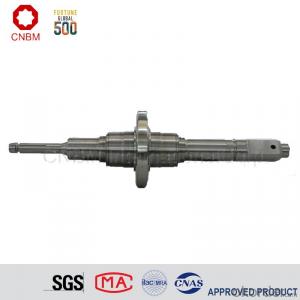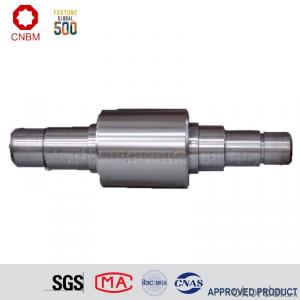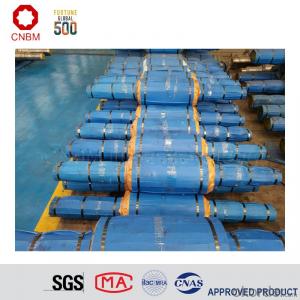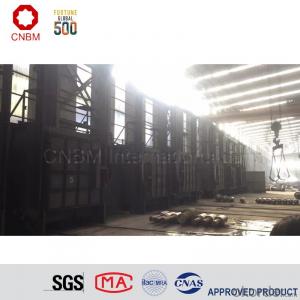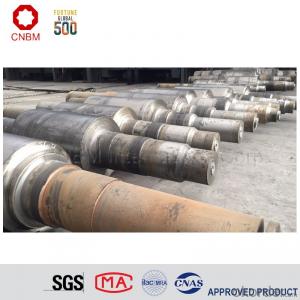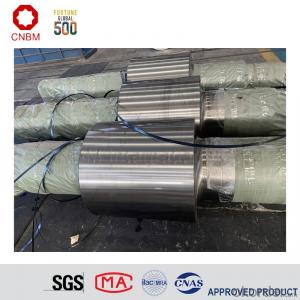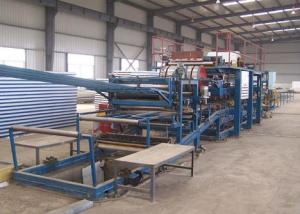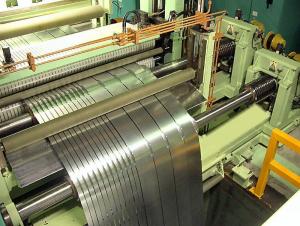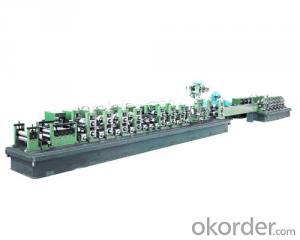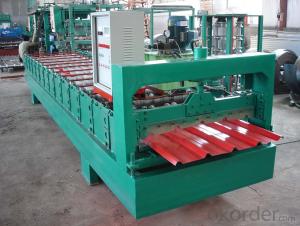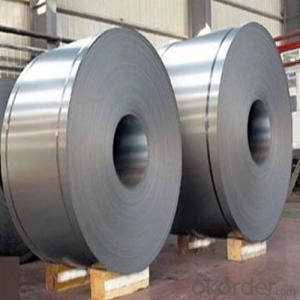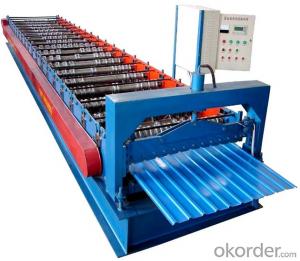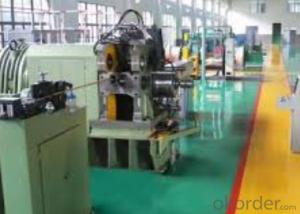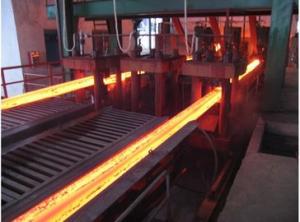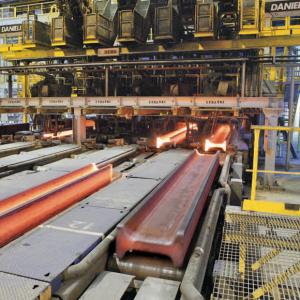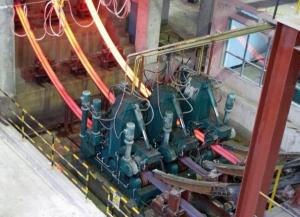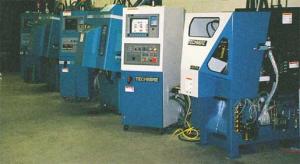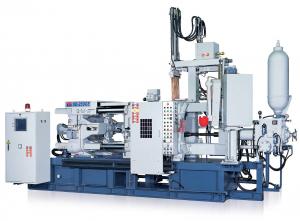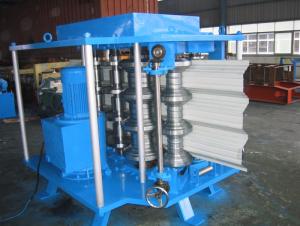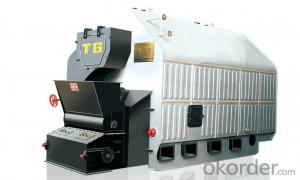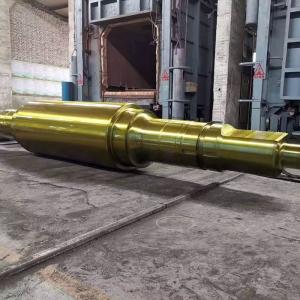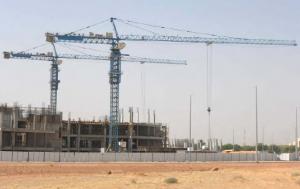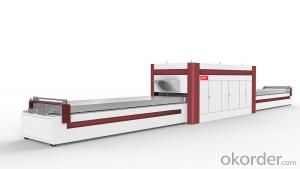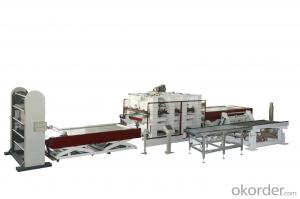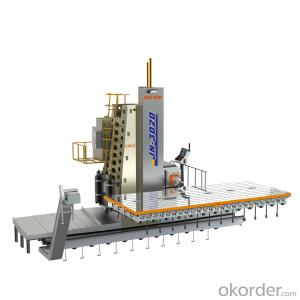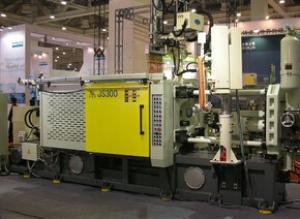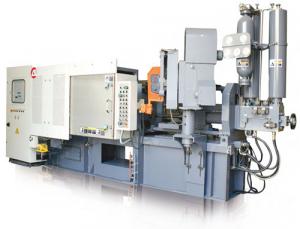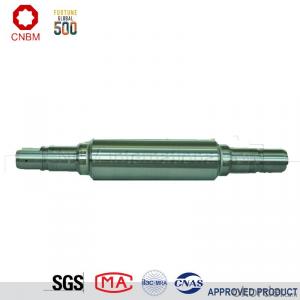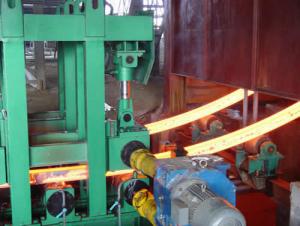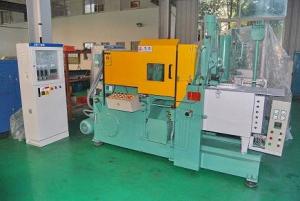Graphitic Steel Roll With High Wear Resistance and High Performance
- Loading Port:
- Tianjin
- Payment Terms:
- TT OR LC
- Min Order Qty:
- 2 m.t.
- Supply Capability:
- 41000 m.t./month
- Option:
- 650X1780X5540; 650X1780X5540; 680X2080X5920
OKorder Service Pledge
OKorder Financial Service
You Might Also Like
Item specifice
Company Profile
CNBM International Corporation (CNBM International) is the most important trading platform of CNBM Group Corporation, a state-owned company under the direct supervision of State-owned Assets Supervision and Administration Commission of the State Council.
CNBM Group is integrated with four business segments: Manufacture, R&D,Sets of equipment and Logistics trading.Mill rolls are our main products.
CNBM International is highly recognized by its business partners and clients all over the world and has established good business relationship with the customers in over 120 countries and regions all over the world.

The product introduction of mill roll
Equipped with advanced technological facilities on melting, casting, forging, heat treating and mechanical machining, our factory has formed 9 professional complete roll manufacturing lines of cast steel, cast iron and forged steel rolls such as strip mill rolls, heavy section mill rolls, wire & bar rolls, special shaped rolls and small-sized cold rolls and specialized production lines of bloom and slab CCM, coke oven equipments and wind power products. Annual production capacity of mill rolls is 500,000 tons, metallurgical equipment is 80,000 tons.

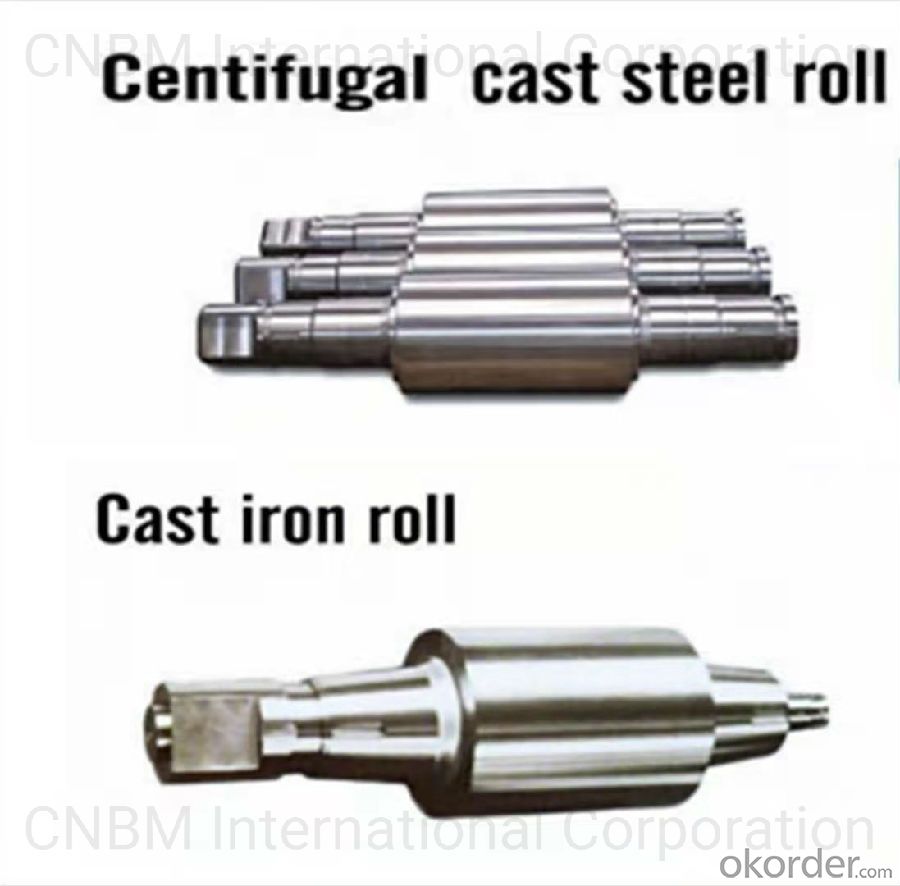
Workshop
Workshop is the core of our company and undertakes all of scientific research work. The company specially produces and supplies all kinds of roll used for hot strip mill, cold strip mill, plate & heavy plate mill, large-sized section mill, universal mill etc.

Products & Specification
| Mill | Application | Material | Product Specification | ||
| Hot Strip Mill | Large-sized vertical roll | Special alloy cast roll, Adamite | All Sizes | ||
| Small-sized vertical roll | Adamite, HiCr iron | ||||
| Roughing work roll | Special alloy cast steel, Adamite, HiCr steel, Semi-HSS, HiCr iron | ||||
| Finish rolling | Early stand work roll | HiCr iron, HSS | |||
| Later stand work roll | ICDP, HSS | ||||
| Finishing back-up roll | Duplex cast steel | D≤¢2000,W≤80t | |||
| Alloy forged steel | D≤¢2000,W≤75t | ||||
| Temper rolling | Work roll | HiCr iron | All Sizes | ||
| Alloy forged steel | |||||
| Back-up roll | ICDP | ||||
| Duplex cast steel | D≤¢2000, W≤80t | ||||
| Alloy forged steel | D≤¢2000, W≤75t | ||||
| Mill | Application | Material | Product specification |
Cold strip mill & Single stand cold mill | Work roll | Alloy forged steel | All Sizes |
| Intermediate roll | Alloy forged steel | ||
| Temper roll | Alloy forged steel | ||
| Back-up roll | Duplex cast steel | D≤¢2000,W≤80t | |
| Alloy forged steel | D≤¢2000,W≤75t | ||
Largesized universal structural mill | Break-down roll | Special alloy cast steel, alloy nodular iron | All Sizes |
| Horizontal collar | High carbon adamite (duplex) | ||
| Vertical collar | High carbon adamite, HiCr iron | ||
| Edger roll Edger roll | High carbon adamite | ||
| Shaft | Alloy forged steel |
| Mill | Application | Marterial | Product Specification | |
| CSP | Vertical Roll | Adamite, Special alloy cast steel, HiCr iron | All Sizes | |
| Roughing work roll | Semi-HSS, HiCr Steel | |||
| Finish rolling | Early stand | HiCr iron, HSS | ||
| Later stand | ICDP, HSS | |||
| Roughing & Finishing back-up roll | Duplex cast steel | D≤¢2000,W≤80t | ||
| Alloy forged steel | D≤¢2000,W≤75t | |||
| Steckel Mill | Vertical roll | Adamite, Special alloy cast steel | All Sizes | |
| Roughing work roll | ICDP, HiCr iron | |||
| Finishing work roll | HiCr iron, ICDP | |||
| Back-up roll | Duplex cast steel | D≤¢2000,W≤80t | ||
| Alloy forged steel | D≤¢2000,W≤75t | |||
| Plate & Heavy plate mill | Rough rolling | 2-hi work roll | Special alloy cast steel, Tool steel | All Sizes |
| 4-hi work roll | HiCr iron, ICDP | |||
| Finishing work roll | HiCr iron, ICDP | |||
| Single stand work roll | HiCr iron, ICDP | |||
| Back-up roll | Duplex cast steel | D≤¢2000,W≤80t | ||
| Alloy forged steel | D≤¢2000,W≤75t | |||
Quality Control
The company has the most advanced experimental and testing equipments in global mill roll industry, including direct-reading spectrometer, spectrum analyzer , X-ray fluorescence analyzer, scanning electronic microscope, energy disperse spectroscopy, X-ray diffractometer, image analyzer, high/low temperature metallographic microscope, X-ray stress meter, brittleness temperature tester, thermal analogue machine, dilatometer, macro and micro hardness tester, OMNISCAM-1X automatic flaw detection, USN60 ultrasonic flaw detector, magnetic powder and non-destructive flaw detection etc,. The advanced inspection equipments and experimental methods provide guarantee for quality control and experiment on material, usability test and performance.
The factories of CNBM invested 2.3 billion RMB for large-scale
CNBM international Corporation has completed equipment and technology upgrade transformation, which was concentrated on three projects, production line of centrifugal casting rolls for hot strip and plate mill, forged roll for cold/hot strip mill, national class technology center and roll material lab. Through upgrade transformation, the following targets have been achideved:
(1)It becomes the world's biggest specialized mill roll maker with the largest production scale, the most complete specifications of products and the most extensive coverage of various rolls used on rolling mill.
(2) The technology of equipments has reached international leading level.
(3) "Mechanization, automation, intellectualization, digitization" of equipments obviously improve the quality control ability.
(4) New types of research instruments improve the R&D capacity of products.
Customers Visit
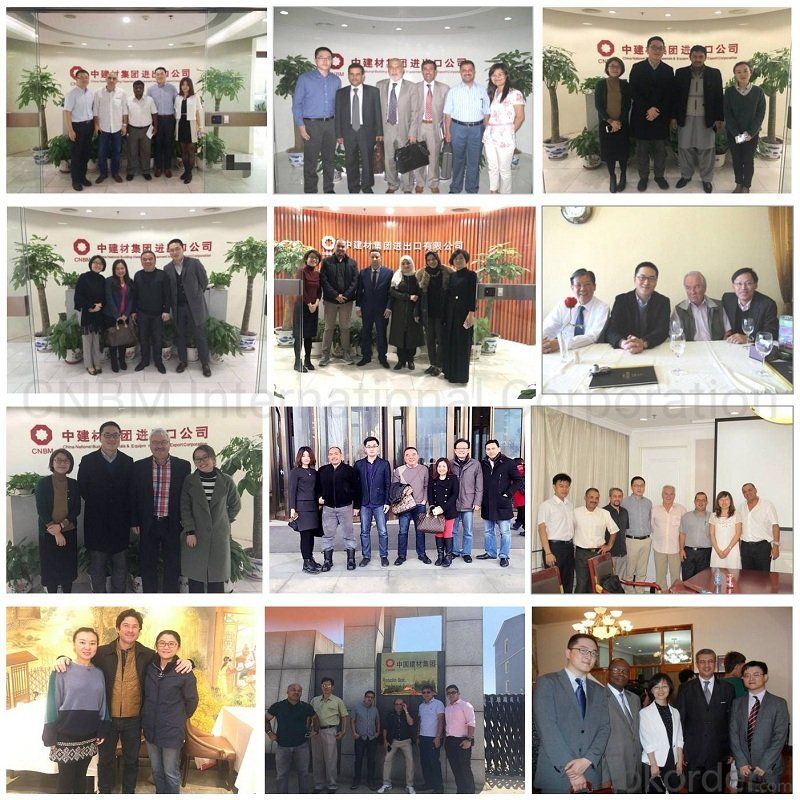
FAQ
Q:Are you a trading company or manufacturer?
A:CNBM is a large-scale central governmental industrial group with its own manufacturing sector, research and development sector, trading sector and logistics sector.
Q:I have some special requirement about specifications.
A:We have a well-rounded product range, which endows us with the capability of applying many special specifications. Please feel free to contact us with yours.
Q:Do you accept OEM service?
A:Yes, we do.
Q:What is your delivery time?
A:It depends on the size/complexity of your order and our own production schedule. Usually we provide a faster delivery than the industry's average.
Q:What is the payment term?
A:Our payment terms are negotiable.
Q:Can I have my own logo on the product?
A:Sure, we can apply your own logo on the products according to your requirement.
- Q:How is the production capacity of metal casting machinery optimized?
- The production capacity of metal casting machinery can be optimized through various strategies and techniques. Firstly, efficient and modern machinery should be utilized. Investing in advanced equipment that is capable of handling larger volumes and producing high-quality castings can significantly enhance production capacity. This includes using automated systems and robotic technology to streamline the casting process and minimize human error. Additionally, implementing lean manufacturing principles can help optimize production capacity. This involves eliminating waste, reducing downtime, and improving overall efficiency. By analyzing and optimizing the workflow, identifying bottlenecks, and implementing continuous improvement practices, the production capacity can be maximized. Another crucial factor is workforce training and skill development. Providing comprehensive training programs for machine operators and technicians can enhance their knowledge and expertise in operating the machinery effectively. Skilled operators can significantly improve the productivity and output of the casting process. Furthermore, proper maintenance and regular servicing of the machinery are vital. Conducting routine inspections, cleaning, and lubricating the equipment can prevent breakdowns and reduce downtime. This proactive approach ensures that the machinery is always running at its optimal capacity. Effective production planning and scheduling are also key to optimizing production capacity. By analyzing demand patterns and forecasting requirements, production can be scheduled in a way that maximizes the utilization of the machinery. This includes minimizing changeovers, optimizing batch sizes, and ensuring a continuous flow of production. Lastly, adopting digital technologies such as computer-aided design (CAD) and computer-aided manufacturing (CAM) software can greatly optimize production capacity. These technologies enable efficient design, simulation, and optimization of casting processes, resulting in improved productivity and reduced lead times. In conclusion, the production capacity of metal casting machinery can be optimized through the use of advanced equipment, lean manufacturing principles, workforce training, regular maintenance, effective production planning, and the adoption of digital technologies. By implementing these strategies, manufacturers can achieve higher productivity, reduced costs, and improved overall efficiency in metal casting operations.
- Q:Can metal casting machinery handle the production of castings with intricate details?
- Yes, metal casting machinery is capable of handling the production of castings with intricate details. The machinery used in metal casting processes, such as sand casting, investment casting, or die casting, has advanced over the years to accommodate the creation of complex and intricate designs. With the use of advanced technologies and techniques, metal casting machinery can produce castings with precise and intricate details, allowing for the creation of intricate and high-quality products.
- Q:How does metal casting machinery handle the finishing operations of castings?
- Metal casting machinery handles the finishing operations of castings through a variety of techniques and processes. Once the castings are removed from the molds, they often require additional work to achieve the desired final product. One common method used by metal casting machinery for finishing operations is grinding. This involves using abrasive wheels or belts to remove excess material, smooth rough edges, and improve the surface finish of the castings. Grinding can be done manually or with the help of automated machinery, depending on the size and complexity of the castings. Another important finishing operation is the removal of any casting defects or imperfections. This can include removing excess metal, such as flash or burrs, that may have formed during the casting process. Metal casting machinery may use techniques like trimming, cutting, or machining to eliminate these defects and ensure that the castings meet the required specifications. Surface treatments are also commonly applied to castings during the finishing process. This can include processes like polishing, sandblasting, or shot blasting to enhance the appearance and smoothness of the castings. Surface treatments can also improve the castings' resistance to corrosion, wear, or other environmental factors. Furthermore, metal casting machinery may utilize heat treatment processes to improve the mechanical properties of the castings. Heat treatment can involve processes like annealing, quenching, or tempering, which can enhance the castings' strength, hardness, and ductility. Additionally, metal casting machinery may include equipment for inspection and quality control during the finishing operations. This ensures that the castings meet the required dimensional accuracy, surface finish, and other specifications. Inspection methods can include visual inspection, dimensional measurement, non-destructive testing, or even automated scanning techniques. In summary, metal casting machinery handles the finishing operations of castings through grinding, defect removal, surface treatments, heat treatment, and inspection processes. These operations are essential to achieve the desired final product with the required quality and performance characteristics.
- Q:What are the different types of post-processing operations performed on castings using metal casting machinery?
- There are several different types of post-processing operations that can be performed on castings using metal casting machinery. These operations are crucial for improving the quality and functionality of the castings. Some of the common post-processing operations are: 1. Machining: Machining involves the removal of excess material from the casting to achieve the desired shape, size, and surface finish. It can include operations such as drilling, milling, turning, and grinding. Machining is often necessary to achieve tight tolerances and precise dimensions. 2. Deburring: During the casting process, burrs or sharp edges may be formed on the casting. Deburring is the process of removing these unwanted edges to improve safety and enhance the aesthetics of the casting. This can be done manually or using specialized deburring equipment. 3. Surface treatment: Surface treatment operations are performed to enhance the appearance, corrosion resistance, and durability of the casting. Common surface treatments include sandblasting, shot blasting, polishing, and painting. These treatments can also help improve the bonding of coatings or adhesives to the casting surface. 4. Heat treatment: Heat treatment processes like annealing, quenching, and tempering are often used to modify the mechanical properties of the castings. Heat treatment can improve the casting's strength, hardness, toughness, and dimensional stability. It is typically done in specialized furnaces under controlled conditions. 5. Welding and joining: In some cases, castings may need to be joined together or welded to other components. This can be done through various welding processes such as MIG, TIG, or spot welding. Welding ensures the integrity and strength of the assembly and allows for the creation of more complex structures. 6. Inspection and quality control: Before the final product is released, castings undergo rigorous inspection to ensure compliance with quality standards. This can include visual inspection, dimensional measurements, non-destructive testing (NDT) techniques like X-ray or ultrasonic testing, and mechanical property testing. These inspections help identify any defects or flaws that may have occurred during the casting process. By performing these post-processing operations, the quality, functionality, and aesthetics of castings can be greatly improved. Each operation has its own significance and is chosen based on the specific requirements of the casting and its intended application.
- Q:How is the excess material removed from the castings produced by metal casting machinery?
- The excess material from castings produced by metal casting machinery is typically removed through a process called finishing or post-processing. This involves various techniques such as grinding, cutting, or machining to remove any unwanted material or imperfections from the castings.
- Q:Can metal casting machinery be used for the production of automotive components?
- Indeed, automotive components can be produced using metal casting machinery. Metal casting is a prevalent manufacturing process employed to create intricate shapes and designs by pouring molten metal into a mold. This technique permits the production of various automotive components, including engine blocks, transmission cases, cylinder heads, and many others. Specifically designed metal casting machinery, such as die casting machines, sand casting equipment, or investment casting systems, can be customized to meet the specific requirements of automotive component production. These machines have the capacity to handle large production volumes, ensuring consistent quality and precision during the manufacturing process. The utilization of metal casting machinery in the automotive industry presents multiple advantages. Firstly, it enables the production of complex shapes and intricate designs, which may prove challenging to achieve through alternative manufacturing processes. Additionally, metal casting machinery facilitates the creation of components with exceptional dimensional accuracy and surface finish. This is of utmost importance for automotive components, as they must fit together precisely and contribute to the overall performance and safety of the vehicle. Moreover, metal casting machinery provides cost-effective solutions for automotive component production. The ability to produce components in large quantities reduces costs per unit, making it an appealing option for automotive manufacturers. Additionally, the versatility of metal casting machinery allows for the use of a wide range of metals and alloys, offering flexibility in material selection based on component requirements. In conclusion, metal casting machinery is, indeed, suitable for the production of automotive components. With its capacity to produce complex shapes, exceptional dimensional accuracy, and cost-effectiveness, metal casting is widely adopted as a manufacturing process within the automotive industry.
- Q:How does metal casting machinery handle the removal of vents from castings?
- Venting or shaking out is the typical method used by metal casting machinery to remove vents from castings. This crucial process guarantees the quality and integrity of the final casting. Once the molten metal is poured into the mold, it solidifies, and during this solidification, gases and air pockets can get trapped within the metal. These trapped gases are responsible for defects in the casting, compromising its strength and structural integrity, such as porosity or air bubbles. To eliminate these trapped gases, vents are incorporated into the mold design. These vents are small channels strategically placed in areas where gas is likely to be trapped, like corners or complex geometries. They allow the gases to escape as the metal solidifies. After the casting has cooled and solidified, the metal casting machinery is utilized to remove the vents. This is achieved by vibrating or shaking the casting, causing the surrounding sand or mold materials to break away, revealing the vents. The shaking or vibrating motion dislodges the sand particles and other mold materials, making it easier to remove the vents. This process is carefully controlled to avoid any damage to the casting itself. Following the removal of the vents, the casting undergoes inspection to ensure there are no remaining sand particles or debris. This inspection guarantees that the casting is clean and free from any contaminants that might impact its quality or performance. In conclusion, metal casting machinery utilizes a shaking or vibrating process to remove vents from castings. This process eliminates surrounding sand and mold materials, exposing and eliminating the vents. It is crucial to eliminate trapped gases and guarantee the quality and integrity of the final casting.
- Q:What are the common assembly methods used in metal casting machinery?
- The common assembly methods used in metal casting machinery include sand casting, investment casting, die casting, and centrifugal casting.
- Q:What are the different types of surface coating and finishing processes used with castings made with metal casting machinery?
- Metal casting machinery utilizes various surface coating and finishing processes to enhance the castings' appearance, durability, and functionality. Some commonly employed techniques in metal casting include: 1. Employing sandblasting: This method entails utilizing high-pressure air or water to propel sand or other abrasive materials onto the casting's surface. By doing so, sandblasting effectively eliminates impurities like rust, scale, or old paint, resulting in a clean and smooth surface. 2. Utilizing powder coating: In this dry finishing process, a fine powder is electrostatically applied to the casting's surface. The coated casting is then subjected to heat, causing the powder to melt and form a resilient and safeguarding layer. Powder coating offers exceptional corrosion resistance and can be applied in a wide array of colors and finishes. 3. Implementing painting: Painting is a prevalent surface coating process employed with castings. It involves applying liquid paint to the casting's surface using brushes, rollers, or sprayers. Painting enhances the casting's aesthetic appeal while simultaneously offering protection against corrosion and environmental factors. 4. Employing plating: Plating is an electrochemical process wherein a thin metal layer is deposited onto the casting's surface. This can be done to achieve a decorative finish or to enhance the casting's resistance against corrosion or wear. Chrome, nickel, and zinc are commonly utilized plating materials. 5. Utilizing anodizing: Anodizing is primarily used on aluminum castings and entails forming a controlled oxidation layer on the casting's surface. This layer can be dyed or sealed to provide heightened corrosion resistance and an improved appearance. 6. Implementing polishing: Polishing is a mechanical finishing process wherein the casting's surface is rubbed with an abrasive material to eliminate imperfections and roughness. This process results in a smooth and glossy surface finish. 7. Employing galvanizing: Galvanizing is a coating process wherein a layer of zinc is applied to the casting's surface through hot-dip or electroplating methods. Galvanizing offers excellent corrosion resistance and is frequently employed in outdoor applications. These examples illustrate the diverse surface coating and finishing processes employed with castings produced using metal casting machinery. The choice of a specific technique will depend on the desired appearance, functionality, and performance requirements of the casting.
- Q:How long do the molds last in metal casting machinery?
- The lifespan of molds in metal casting machinery can vary depending on various factors such as the type of metal being cast, the complexity of the mold design, the quality of materials used, and the care taken during the casting process. Generally, molds can last for several hundred to several thousand casting cycles before they need to be replaced or repaired. However, regular maintenance and proper handling can extend their lifespan further.
1. Manufacturer Overview |
|
|---|---|
| Location | |
| Year Established | |
| Annual Output Value | |
| Main Markets | |
| Company Certifications | |
2. Manufacturer Certificates |
|
|---|---|
| a) Certification Name | |
| Range | |
| Reference | |
| Validity Period | |
3. Manufacturer Capability |
|
|---|---|
| a)Trade Capacity | |
| Nearest Port | |
| Export Percentage | |
| No.of Employees in Trade Department | |
| Language Spoken: | |
| b)Factory Information | |
| Factory Size: | |
| No. of Production Lines | |
| Contract Manufacturing | |
| Product Price Range | |
Send your message to us
Graphitic Steel Roll With High Wear Resistance and High Performance
- Loading Port:
- Tianjin
- Payment Terms:
- TT OR LC
- Min Order Qty:
- 2 m.t.
- Supply Capability:
- 41000 m.t./month
- Option:
- 650X1780X5540; 650X1780X5540; 680X2080X5920
OKorder Service Pledge
OKorder Financial Service
Similar products
New products
Hot products
Hot Searches
